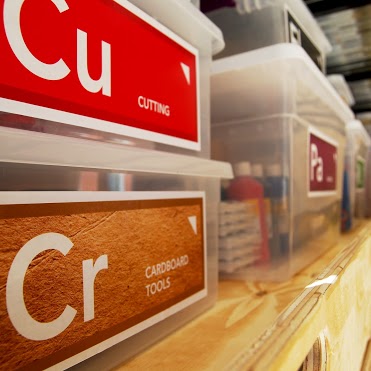
Beyond School Bells
Think Make Create Labs provide rural after-school programs a “makerspace” where kids take on design challenges to increase STEM knowledge and develop creativity and critical thinking.
In the largely rural state of Nebraska, what does it look like to expand opportunity for kids?
It may look like a car pulling a trailer down the highway.
Twenty-five 6-by-11-foot trailers are on the road carrying bins of materials, circuits, LED lights, battery-operated gizmos and reams of cardboard.
Known as Think, Make, Create Labs, the trailers are used by public school districts and nonprofits for after-school exploration.
“We saw it as an early on-ramp to get young people thinking about themselves as creative problem-solvers in Nebraska,” said Jason Weseman, maker space coordinator for Grand Island Public Schools, Grand Island, Neb., in a video for the nonprofit I Love Public Schools.
“We really feel like rural communities have a tremendous underutilized potential and we thought the TMC Lab would be a good platform for engaging some of that STEM talent,” he said.
The Think Make Create Labs started in 2015, a project of Beyond School Bells, Nebraska’s after-school network.
“We were trying to expand makerspace opportunities,” said Jennifer Jones, project director of Beyond School Bells. “Maker” activities are hands-on collaborative activities in which kids are given materials, a design challenge and freedom to explore and create.
Using design thinking, kids tinker, make mistakes, redo their design and create a final product, Jones said.
“Students have the opportunity to really dive in, think critically and also be creative,” she said.
Low-tech and color-coded
The TMC labs themselves are designed to meet specific challenges.
Staff in after-school programs may not be knowledgeable about maker activities, Jones said. For one thing, staff members may be newly hired, she said.
“It can be fairly daunting,” she said. “We want every program to have a starting place.”
A color-coded activity guide describes 50 different activities and the materials needed.
The TMC lab allows adults working in after-school programs to become more comfortable with the general mentality of making and tinkering.
The lab may be at one after-school site for a month and then move to another, she said.
“We’ve seen a spike in the amount of maker activities after the trailer leaves,” she said
The lab also serves as a storage space that many after-school programs lack. It was designed to be low-tech.
“We do tons and tons of stuff with cardboard,” Jones said. In one activity, students are asked to design a city and build it with cardboard.
Kids use conductive copper tape to build low-voltage electronic circuits on paper. They make conductive Play-Doh circuits. The trailer carries old electronics that kids can pull apart.
“High-tech machines do not allow that opportunity to just be creative and tinker,” Jones said.
As a result, the lab is more affordable and can stock materials for a bigger array of activities, she said. It’s aimed at kids in third through eighth grade.
The lab carries materials worth about $2,000, said Doak Field, director of TMC expansion for Beyond School Bells.
“High school students [in shop classes] help build out the interior of the trailer,” Field said.
It can serve as a pop-up for different events, he said.
The activities are intended to complement what kids are learning in school.
Jeff Cole is network lead for Beyond School Bells.
“The idea behind the TMC is that it can be an early on-ramp to get young people to figure out what they can do with household items,” he told the Papillion Times.
“Our vision is that this would grow the next generation of entrepreneurs that will continue to provide vitality to this community,” he said.































